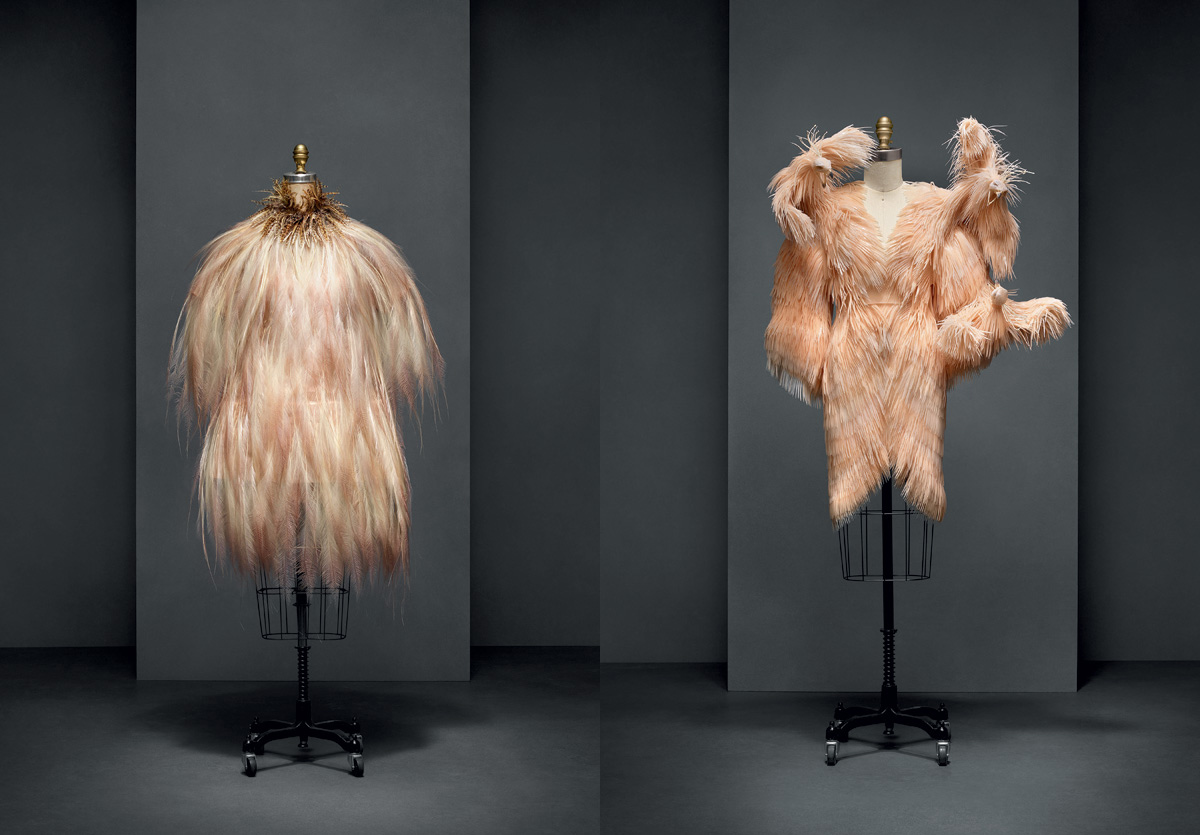The Met Gala is quickly approaching, and with it comes talk of all the technological advancements that have been made in the fashion industry in the past couple of years. Such is the theme of the ball, which will take place on May 5th, and pay tribute to a collection of over 120 haute couture and ready-to-wear ensembles presented under the title Manus x Machina: Fashion in the Age of Technology. According to the Met website, the collection will explore the reconciliation between hand-made and machine-made fashions. It will feature traditionally luxurious methods such as embroidery, feather work, and pleating, as well as new processes including 3D printing and computer modeling.
The Met website is currently hosting a sneak peek at the collection, and it shows some interesting juxtapositions between the hand-made and digitally produced. On display will be a classic 1960s Chanel suit made from wool and silk, directly opposing a 2015/16 Chanel suit of a similar style but made using 3D-printing technology to create a quilted look. Similarly, it almost appears as if Iris Van Herpen has recreated the 1969/70 Yves Saint Laurent feather dress, but with silicone instead of real feathers. The Van Herpen dress is similar in color, texture, and style, but uses man-made materials rather than natural. While the end products hold a similar look and feel, the handmade garment is meant to be elite, and symbolic of the time and money poured into its creation while the other dress is a product of technologies engineered to be efficient and cost-effective. At the exhibit, however, the two dresses hold equal footing, and both demand to be celebrated for their different accomplishments.
A look back at what culminated in a tech-themed gala reveals that designers have been interested in science and science-fiction for a long time. Back in 1999, Alexander McQueen was already experimenting with “android couture” when he created a Tron-inspired collection for Givenchy’s fall catwalk. His end pieces featured flashing LED’s attached to vacuform plaster body casts. The same year, John Galliano took inspiration from the Matrix for a Dior collection of sleek black leather that mixed both future and past. A year later Junya Watanabe created Techno Couture, a fall collection of wearable polyester chiffon honeycombs. In 2004, McQueen took queues from sci-fi yet again with fashions resembling the wardrobe selection of Princess Leia from Star Wars and Uhura from the new Star Trek movies. Now, the effects of science in fashion are much more radical. Just this year, Hussein Chayalan revealed a water-soluble garment sin his Spring collection. In the middle of the runway, it suddenly started raining as the models outerwear melted away to reveal Swarovski crystal studded dresses.
Cool right? If that’s not enough, the sneaker industry is also going through a science-fiction revolution. On April 26th, Reebok released the Alien Stomper, a high-top red and white sneaker designed to look exactly like the kicks worn by Sigourney Weaver in Aliens. Unfortunately, they sold out in 40 minutes, so your best luck scoring a pair will be eBay. Nike also recently announced they’re working on the HyperAdapt 1.0. What’s that? Why, it’s a replica shoe of Marty McFly’s light up, self-tying sneakers!
If this article hasn’t convinced you that fashion is cool yet, maybe a trip to the Manus x Machina will. The exhibit will be at the Met May 5th until August 14th. Don’t miss it!
